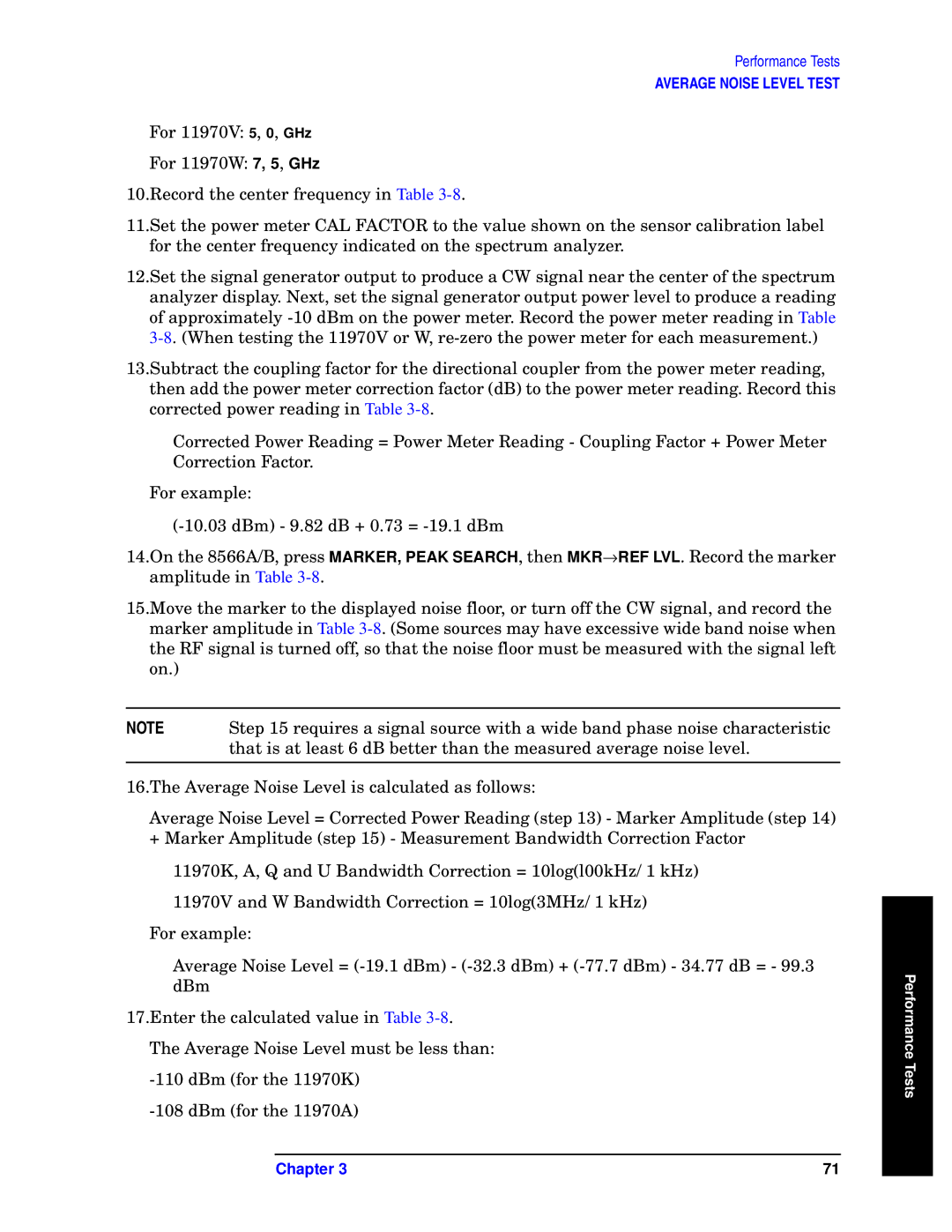
Performance Tests
AVERAGE NOISE LEVEL TEST
For 11970V: 5, 0, GHz
For 11970W: 7, 5, GHz
10.Record the center frequency in Table
11.Set the power meter CAL FACTOR to the value shown on the sensor calibration label for the center frequency indicated on the spectrum analyzer.
12.Set the signal generator output to produce a CW signal near the center of the spectrum analyzer display. Next, set the signal generator output power level to produce a reading of approximately
13.Subtract the coupling factor for the directional coupler from the power meter reading, then add the power meter correction factor (dB) to the power meter reading. Record this corrected power reading in Table
Corrected Power Reading = Power Meter Reading - Coupling Factor + Power Meter Correction Factor.
For example:
14.On the 8566A/B, press MARKER, PEAK SEARCH, then MKR→ REF LVL. Record the marker amplitude in Table
15.Move the marker to the displayed noise floor, or turn off the CW signal, and record the marker amplitude in Table
NOTE | Step 15 requires a signal source with a wide band phase noise characteristic |
| that is at least 6 dB better than the measured average noise level. |
|
|
16.The Average Noise Level is calculated as follows:
Average Noise Level = Corrected Power Reading (step 13) - Marker Amplitude (step 14) + Marker Amplitude (step 15) - Measurement Bandwidth Correction Factor
11970K, A, Q and U Bandwidth Correction = 10log(l00kHz/ 1 kHz)
11970V and W Bandwidth Correction = 10log(3MHz/ 1 kHz)
For example:
Average Noise Level =
17.Enter the calculated value in Table
The Average Noise Level must be less than:
Performance Tests
Chapter 3 | 71 |
